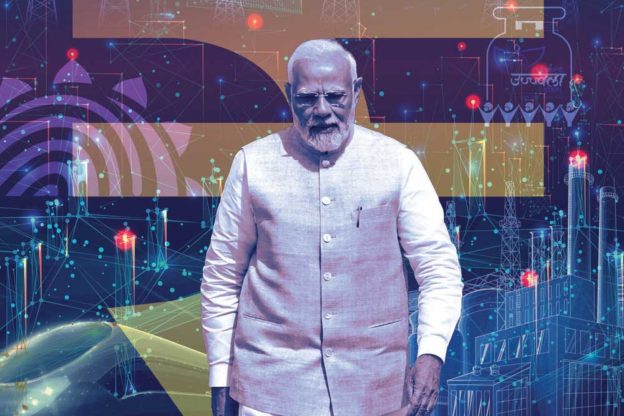The brokerage in a 31-page report titled ‘The decade under PM Modi – a deep-dive’, hailed landmark reforms, inflation control and financial inclusion and digitisation despite inheriting “a weak economy with several institutions in distress”.
India has risen from being the 10th largest economy in the world in 2014 to the fifth largest now on the back of “landmark” reforms like GST and an unprecedented infrastructure push, Bernstein said in a report on the Modi government’s tenure. The brokerage in a 31-page report titled ‘The decade under PM Modi – a deep-dive’, hailed landmark reforms, inflation control and financial inclusion and digitisation despite inheriting “a weak economy with several institutions in distress”.
“Fortune strikes overnight – for some, it is by luck, and for most, it is led by years of effort. The Indian story is similar, becoming more believable even as the building blocks took over a decade to strengthen,” it said. Under Modi, India has seen tremendous progress in several areas, including digitisation, formalisation of the economy, a better policy environment to attract investments for manufacturing initiatives and a step-up in infra spending.
“The building blocks have been put in place, and although economic growth has been sluggish for several years in the past decade – part of that was unwinding the excesses and strengthening the economy through new reform initiatives. “The building blocks are clearly in place for a positive India cycle as long as the continuity of policies remains. We remain positive on the broader markets, even as we see room for some moderation in 2HFY24 macro, as we believe that the cycle view will continue to limit downside risks,” the report said.
Nine years ago, Modi took oath as the Prime Minister of India after a landslide victory on promises of “good days”, economic growth, reducing red-tapism, ending corruption and improving business sentiment. Economic prosperity, along with good governance, was on top of the BJP manifesto in 2014. The promise was to deliver high growth, create more jobs and promote investments.
Bernstein studied some parameters to assess how India has fared since 2014. “GDP has grown at a compound annual growth rate (CAGR) of 5.7 per cent since 2014, and ex-COVID, growth has been impressive at 6.7 per cent. While a bit below the UPA era’s 7.6 per cent, that phase benefited from a low base, a global upturn for a large part of that period,” it said.
The Modi government “inherited a weak economy with several institutions in distress”, it said blaming “excesses” of the previous UPA government for the same. India has now moved up to the 5th rank in GDP globally compared to 10th in 2014; the per capita income rank, while still lagging at 127th, has improved from 147th in 2014.
“Landmark reforms such as GST mark this phase, and inflation control has also been remarkable. This has been led by lower MSP hikes, a lucky break on the crude/commodity price and prudent measures during COVID,” it said adding employment scale has not been a large talking point as manufacturing initiatives did not play out as expected.
Business perception has improved with a large jump in ease of business indicators.India, it said, has stepped up infra investments supported by government spending unwinding the mistakes of the previous phase. These investments span from highways to rail, port and power sectors.
According to Bernstein, financial inclusion and digitisation has been a great success story as individuals with bank accounts have increased from 35 per cent of the population in 2011 to over 77 per cent by 2021, thanks to 50 crore Jan Dhan accounts opened since 2014.Also, direct benefit transfers have swollen to over Rs 7 lakh crore as of FY23, from Rs 74,000 crore in FY14.
The government has effectively used UID (Aadhaar-PAN linkage) to subsidize various schemes while removing delays and intermediaries. “Unified payments interface (UPI) has made tremendous progress giving the confidence to expand that through e-commerce digitization through ONDC and Fintech credit through OCEN,” it said adding access to LPG and sanitation infra have also been vital success stories.
It added that there is a need to improve on some of the parameters. “The HDI (human development index) rank has been declining since 2016, with a decrease in scores aggravated by decreased schooling years during COVID. The corruption perception index is still languishing, the increase in female literacy has not seen any material change, and the gender ratio in secondary school enrollments has declined below 1,” it added. ANU
https://www.financialexpress.com/economy/india-on-a-roll-owing-to-landmark-reforms-under-pm-modi-says-bernstein-report/3174713/





